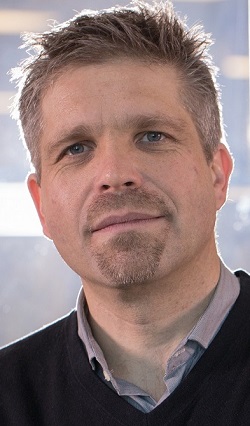| Sep 16 |
| Battle of the Atlantic: Gauntlet to Victory — By Ted Barris | Watch the Video |
Show/hide more details.
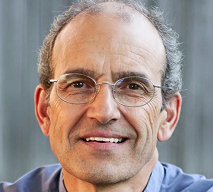
In the 20th century’s greatest war, one battlefield held the key to victory or defeat—the North Atlantic. It took 2,074 days and nights to determine its outcome and in the end the Battle of the Atlantic proved to be the turning point of the Second World War. That battle also proved to be Canada’s longest continuous military engagement of the war. The siege pitted German U-boats, which were attempting to destroy Allied transatlantic Merchant Navy convoys sailing to and from Britain, against naval escorts and bomber-reconnaissance aircraft. Many of the former were ships of the Royal Canadian Navy (RCN). In 1939 Canada’s navy went to war with exactly 13 warships and about 3,500 sailors. Over the course of the long, desperate struggle, the RCN grew to 400 fighting ships and over 100,000 men and women in uniform. By V-E Day in 1945 the RCN was the fourth largest navy in the world. Bestselling author Ted Barris tells stories from his latest book, The Battle of the Atlantic: Gauntlet to Victory, with sympathetic regard for individuals and families caught in tumultuous times. He has published 20 non-fiction books, half of them wartime histories. His The Great Escape: A Canadian Story won the 2014 Libris Award as Best Non-Fiction Book in Canada. His Dam Busters: Canadian Airmen and the Secret Raid Against Nazi Germany received the 2019 NORAD Trophy from the RCAF Association; and his Rush to Danger: Medics in the Line of Fire was listed for the 2020 Charles Taylor Prize for Non-Fiction in Canada. Battle of the Atlantic is Mr. Barris' twentieth non-fiction book. In addition to being a highly productive and successful author, Ted Barris is a Member of the Order of Canada. |
| Oct 14 |
| Causes and Continuing Effects of the Black Death — By Hendrik Poinar | R |
Show/hide more details.
A plague victim shows his physicians the swelling (bubo) in his armpit. Woodcut, circa 1500. NPR (USA).
Since then, using DNA molecules extracted from the teeth of plague victims, researchers have uncovered a new and compelling story of when the Black Death emerged, how it moved across Europe and Western Asia, and what consequences were for survivors. Our speaker will discuss how ancient DNA is helping to revise cultural and genetic knowledge about the Black Death pandemic. Dr. Hendrik Poinar is a Professor in the Department of Anthropology, McMaster University, and the principal investigator at the university's Ancient DNA Centre. Read about the Ancient DNA Centre, what Dr. Poinar and his colleagues do, and some of their findings, at https://adna.mcmaster.ca/. |
| Nov 18 |
| Dreamers, Schemers, and Builders: A Glimpse at Royal Botanical Gardens’ History — By David Galbraith | Watch the Video |
Show/hide more details.
Indeed, by 1934 “The Ambitious City” had more park acreage than any other Canadian city and much of that acreage became RBG. The City Beautiful movement, the first Commonwealth Games (the British Empire Games of August 1930), McMaster University’s new Hamilton City campus, which opened in 1930, the Great Depression of the `30s, and Canada’s best architects — they all became entangled with bankruptcies, threatened wetlands, and plans for arctic research — and they're all part of RBG’s story. Dr. David Galbraith is Director of Science at RBG, Adjunct Biology Professor at McMaster University, and a passionate advocate for both natural and cultural heritage. Learn more about RBG at https://www.rbg.ca/. |
| Dec 9 |
| Taking a Dot for a Swim: The Art of Surface Weaving — By Mita Giacomini | NA |
Show/hide more details.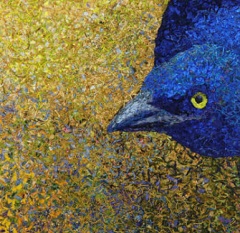
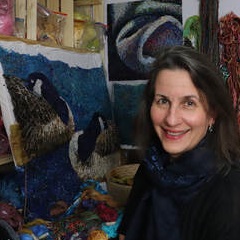
In pursuit of ever more texture, colour, and meaning, Dundas, Ontario, textile artist Mita Giacomini has developed a novel art technique she calls “surface weaving”. In this approach, strands of fabric, string and fibres swim together, creating exuberant colour interactions and textures as an image takes form. In this talk Ms Giacomini will take us through her creative journey exploring new ways to evoke experiences of nature. She’ll share recent work in her ongoing series on encounters with birds, as well as newer series inspired by the qualities of textiles themselves, as both subject and art medium. Throughout, she’ll address the frequently asked question: "Why make images with fibre, rather than with paint or drawing media?" In doing so she will illustrate how the fibre medium offers a sculptural dimension, rich cultural associations, and a geometric resonance with the fabric of nature that is difficult to achieve with other media.
Mita Giacomini’s colourful, neo-impressionist birds and semi-abstract images inspired by nature have been exhibited in numerous galleries and museums across Canada and internationally, and featured in many fibre art articles and books.
Learn more about Mita and view examples of her art on her website, "https://www |
| Jan 13 |
| The 23rd Dr. John Rae Lecture ~~ Unveiling Antarctica's Subglacial Secrets: A Journey into Hidden Waters — By Christine Dow | R |
Show/hide more details.

Antarctica is a vast, cold desert at the far ends of the Earth.
However, underneath kilometers of ice there is a fascinating world of waterways, long sinuous rivers, and lakes that flow from the interior into the ocean.
This water plays a vital role in the behaviour of the ice sheet, in some regions causing the ice to flow faster and driving enhanced melt in the sensitive regions where the ice first begins to float on the ocean.
Therefore, to predict the future of the ice sheet in our warming planet, we need to know what’s happening at its slippery base.
Dr. Christine Dow is an Associate Professor at the University of Waterloo, Ontario, and the Canada Research Chair in Glacier Hydrology and Ice Dynamics.
Her research takes her to far-flung polar regions ranging from the ice shelves of Terra Nova Bay, Antarctica, to glaciers in the St. Elias Mountains of Yukon Territory.
Dr. Dow uses techniques such as numerical modelling, field data collection, and geophysics to examine the changes occurring to our ice sheets and glaciers in a warming climate.
Dr. Dow's publications are listed on the Waterloo website at "https: |
| Feb 17 |
| Two-Eyed Seeing: Joining Science and Traditional Knowledge — By Henry Lickers | R |
Show/hide more details.
Henry Lickers has spent much of his life thinking about the importance of bridging science and local knowledge gained by Indigenous communities from experiences with the land, the water, and their inhabitants. As the first Indigenous commissioner on the International Joint Commission (IJC) he brought an awareness of ‘two-eyed seeing’ gained through his own experience and previous work as environmental science officer for the Mohawk Council of Akwesasne. Now recently refired from the IJC, Henry Lickers is a Haudenosaunee citizen of the Seneca Nation, Turtle Clan and a biologist.
The IJC is a government-appointed group that oversees all bodies of water shared by Canada and the United States.
Read about the IJC at "https://www. |
| Mar 9 |
| How Eclipses and Transits Transformed – and Continue to Transform – Science — By Doug Welch | R |
Show/hide more details.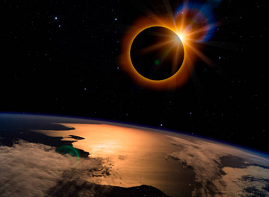

The total solar eclipse on April 8, 2024, starting at 3:18 pm in the Hamilton-to-Niagara area, is an opportunity for scientists and stargazers alike to witness an event that connects us all to astronomy. Eclipses of both the Sun and Moon have played many roles in historical settings and have revealed a rich set of knowledge about our solar system, fundamental physics, and insights into the temporal evolution of the Earth-Moon system and the outer layers of both the Sun and Moon. Dr. Welch recounts some of the most pivotal research, such as testing general relativity, and discusses the "transit method" that informs our understanding of the abundance of planetary systems around other stars. Dr. Doug Welch, PhD Astronomy, is a full Professor in the Department of Physics and Astronomy and a former Vice-Provost and Dean of Graduate Studies at McMaster University. His areas of expertise include evolved pulsating variable stars, observational studies of dark matter, and the study of supernova light echoes. He is an author or co-author on over 150 refereed journal papers and a co-author on four Nature papers. |
| Mar 20 |
| Traversing the Continent: Shaping the North American Musical Landscape — By Abigail Richardson-Schulte. | NA | Held at St. Paul's United Church, Dundas |
Show/hide more details.
Hamilton Philharmonic Orchestra Composer-in-Residence Abigail Richardson-Schulte explores the lives and artistic impacts of North American composers whose work helped shape the musical landscapes we know today — from the soul-stirring sounds of American composers Copland and Barber to the remarkable musical infrastructure building of Sir Ernest MacMillan in Canada. Discover the historical context, cultural nuances and influences behind the quintessential North American sound. Presented in partnership with the HPO. Abigail will provide piano demonstrations throughout her presentation, highlighting the music of featured composers and a performance of her own piece. |
| Apr 6 |
| One Cartoonist's Completely Non-Definitive, Partial History of the Graphic Novel — By Joe Ollmann | Watch the Video |
Show/hide more details._250x304.jpg)
Graphic novels are finding their place in mainstream literary circles and readership, in part due to growing recognition for the value of this relatively new narrative form. For example, Sabrina, by Nick Drnaso, was nominated for Britain's Man Booker prize in 2018, while Kate Beaton’s Ducks took home top honours in 2023 in the CBC's Canada Reads competition. Flamborough-born and Mohawk College educated, Canadian cartoonist Joe Ollmann gives his take on the development of graphic novels, why they deserve our attention, and why some are under attack. He is the author of eight graphic novels, including Fictional Father, the first graphic novel nominated in the adult fiction category of Canada's Governor General's Awards, and a winner of the Hamilton Literary Award for the same category. In 2019 he co-curated with Alana Traficante ‘This Is Serious’, a 47-artist retrospective of indie comics at the Art Gallery of Hamilton. |

|
Our Past Lectures
2023 – 2024
|

|
R Recorded.
The lecture was recorded but requires editing. This will take some time.
When a suitable file becomes available a "Watch the Video" link will be provided on this page and members and friends will be notified via email.
NA Not Available.
The lecture was not recorded due to technical difficulties, or our Speaker did not consent to being recorded,
or our Speaker did not consent to public access to the recording.
All lectures were presented in Room 1A1, Ewart Angus Centre, McMaster University Medical Centre (MUMC) except where indicated.
